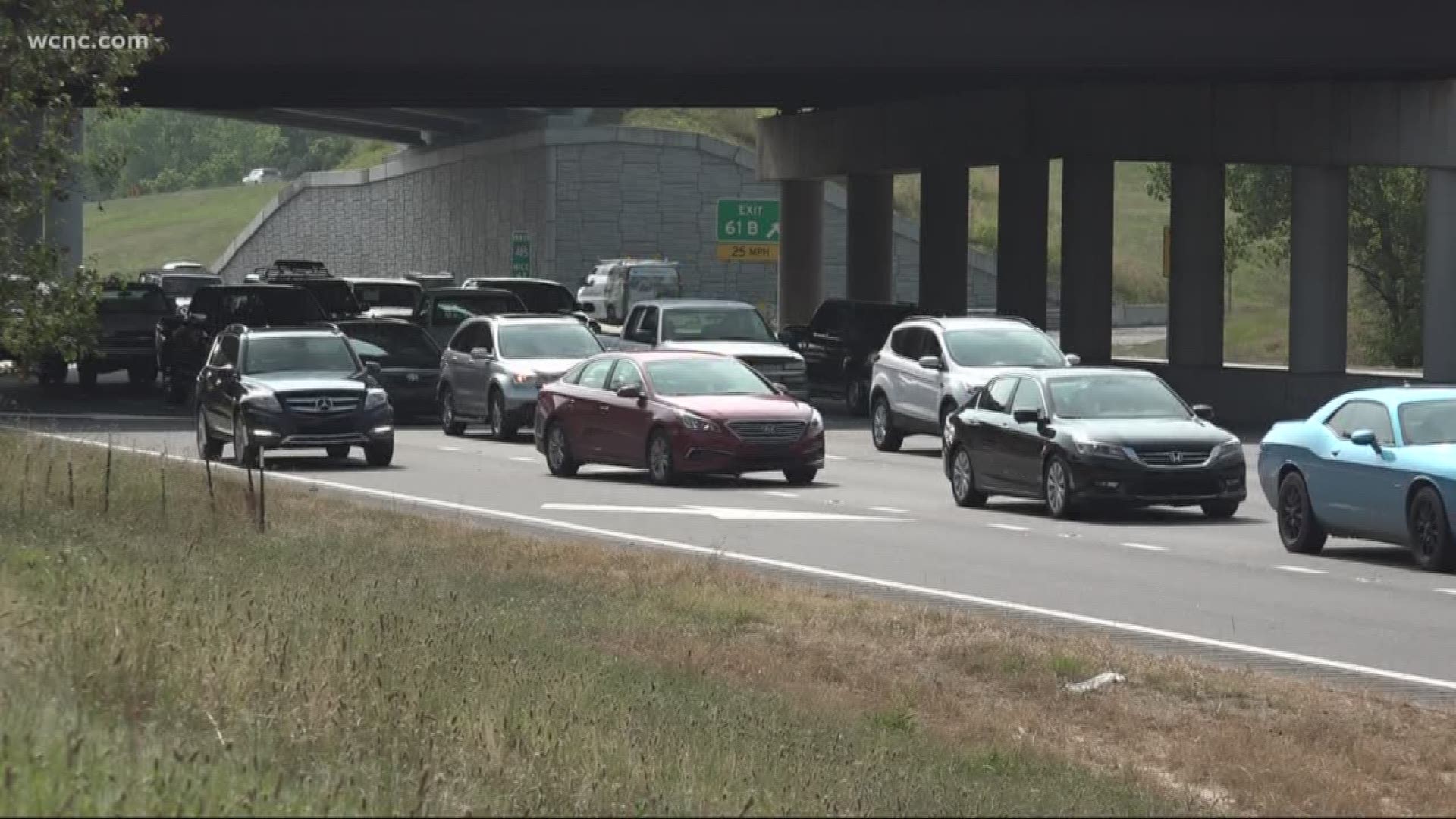CHARLOTTE, N.C. — States are counting on toll lanes to reduce highway congestion, but there's another solution to help us all merge and it's free.
In fact, the North Carolina Department of Transportation recently started trying out the concept. There is a catch though. It forces every one of us to do something that's uncomfortable and even feels downright rude.
It's called zipper merging. Popular in the Midwest and Northeast, zipper merging is when drivers use the entirety of a lane before merging and people in the other lane take turns letting those cars in.
When it comes to merging, so many of us take the safe bet and merge early, but research suggests that is only an effective technique when there isn't traffic congestion. Where there is congestion, zipper merging is the preferred method.
"They put that pavement there for a reason. They want you to drive on it," NC State Institute for Transportation Research and Education Research Associate Chris Vaughan said.
NCDOT recently unveiled its version of the "Dynamic Zipper Merge" in busy work zones in other parts of the state where two lanes merge into one. The state is using speed sensors that gather data and then feed the data to message boards to communicate with drivers about how they should merge.
"The use of these messages in heavy traffic reduces the confusion between drivers who think they should merge early versus those who want to use the open lanes for as long as possible," said NCDOT Chief Traffic Engineer Kevin Lacy said. "This helps remove aggressive driving behavior."
In one stretch of I-77, the state found traffic back-ups dropped from eight miles to two.
Vaughan said NC State's research showed zipper merges make for a speedier, safer drive. In one work zone he studied, Vaughan said the average speed increased from 29 miles per hour to 40 when people zipper merged.
"I think what we want to do is push people out of their comfort zones a little bit," he said. "If this became the new norm in North Carolina, it would make a huge difference."
Vaughan is not suggesting reckless driving. Instead, he's recommending drivers carefully using the full lane (not the shoulder) before merging at the very end.

